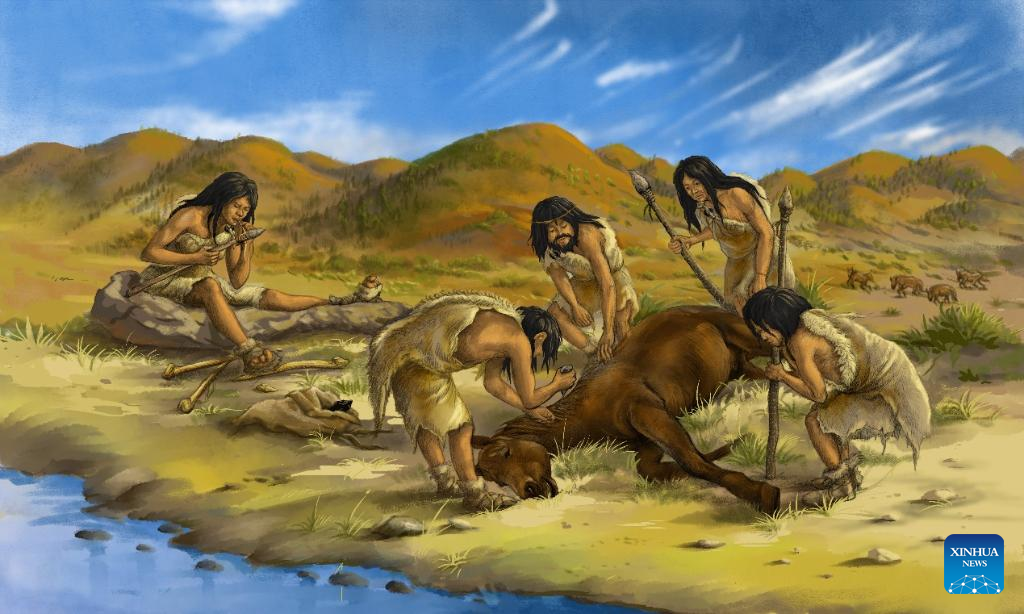Study reveals characteristics of East Asian Homo sapiens 45,000 years ago
Feb 18, 2024
This image provided by the Institute of Vertebrate Paleontology and Paleoanthropology (IVPP) under the Chinese Academy of Sciences shows the artistic rendering of Homo sapiens living in the Shiyu Site in north China's Shanxi Province dating back 45,000 years. (Xinhua)
BEIJING, Feb. 17 (Xinhua) -- The research on the origin, evolution and diffusion of Homo sapiens has long been a popular topic in the field of paleoanthropology.
Led by Chinese scientists, an international research team's recent study of a site in north China's Shanxi Province has unveiled fresh insights into the characteristics of Homo sapiens dating back 45,000 years.
Located on the southwest margin of Nihewan Basin, the Shiyu Site in Shanxi's Shuozhou City was discovered in 1963.
Since 2012, archaeologists from the Institute of Vertebrate Paleontology and Paleoanthropology (IVPP) under the Chinese Academy of Sciences, Peking University and various universities and research institutions in China, Australia, France, Britain, Japan, Spain and Germany have carried out comprehensive, multi-disciplinary and cross-platform international collaborative research at the site.
The deposits found at the site indicate that the Shiyu Homo sapiens lived on flat terraces beside rivers, with grassland as the main vegetation.
The archaeologists conducted carbon-14 dating on three animal bone fragments with scratches to obtain direct evidence and establish an accurate timeline of human activity at the site.
They analyzed the data using the Bayesian model and extended the site's age from about 35,000 years ago to 45,000 years ago.
The study indicates that Shiyu Homo sapiens were skilled in hunting and resource utilization, said Yang Shixia, from the IVPP, who is the first author of the study.
They made and used composite tools to hunt equids, ate meat and bone marrow, and used animal skins, Yang added.
Archaeologists also found that the stone tools, ornaments and bone implements unearthed at the site exhibit both Eastern and Western characteristics, providing evidence of the complex human communication in East Asia at the time.
The study has updated the traditional understanding of the diffusion and cultural development of Homo sapiens in East Asia, Yang said.
This study is of great significance for advancing the understanding of the evolution and spread of Homo sapiens from a global perspective, Yang added.
Source:
Xinhua News Agency
